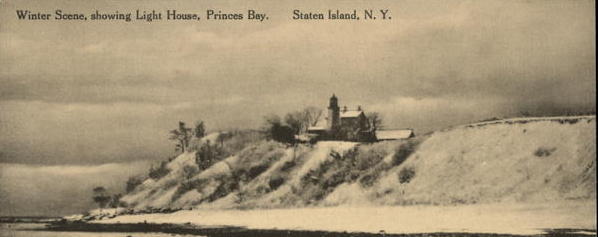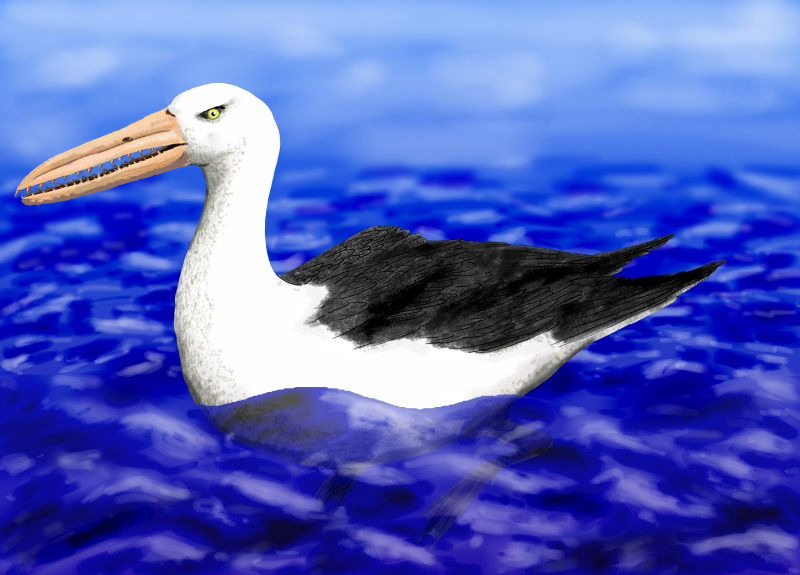|
Mount Loretto Unique Area
Mount Loretto Unique Area is an open space reserve and nature preserve administered by the New York State Department of Environmental Conservation on the South Shore of Staten Island, New York City. The area's total size is , of which is underwater. History Mount Loretto was once the largest orphanage in New York State. It was started by Father John Christopher Drumgoole, an Irish Catholic priest and founder of the Mission of the Immaculate Virgin in Manhattan, an organization to help poor and disposed children. He purchased the Staten Island land for the orphanage in the 1880s and named it "Mount Loretto" in honor of one of the nuns who worked with him at the mission. It was served by the Mount Loretto Spur of the Staten Island Railway. The area that encompasses the Mount Loretto Unique Area was purchased from the Archdiocese of New York by the New York State Department of Environmental Conservation in 1999. The property formerly contained various buildings including the S ... [...More Info...] [...Related Items...] OR: [Wikipedia] [Google] [Baidu] |
Staten Island
Staten Island ( ) is the southernmost of the boroughs of New York City, five boroughs of New York City, coextensive with Richmond County and situated at the southernmost point of New York (state), New York. The borough is separated from the adjacent state of New Jersey by the Arthur Kill and the Kill Van Kull and from the rest of New York by New York Bay. With a population of 495,747 in the 2020 United States census, 2020 Census, Staten Island is the least populated New York City borough but the third largest in land area at ; it is also the least densely populated and most suburban borough in the city. A home to the Lenape Native Americans, the island was settled by Dutch colonists in the 17th century. It was one of the 12 original counties of New York state. Staten Island was City of Greater New York, consolidated with New York City in 1898. It was formerly known as the Borough of Richmond until 1975, when its name was changed to Borough of Staten Island. Staten Island has so ... [...More Info...] [...Related Items...] OR: [Wikipedia] [Google] [Baidu] |
Terminal Moraine
A terminal moraine, also called an end moraine, is a type of moraine that forms at the terminal (edge) of a glacier, marking its maximum advance. At this point, debris that has accumulated by plucking and abrasion, has been pushed by the front edge of the ice, is driven no further and instead is deposited in an unsorted pile of sediment. Because the glacier acts very much like a conveyor belt, the longer it stays in one place, the greater the amount of material that will be deposited. The moraine is left as the marking point of the terminal extent of the ice. Formation As a glacier moves along its path, the surrounding area is continuously eroding. Loose rock and pieces of bedrock are constantly being picked up and transported with the glacier. Fine sediment and particles are also incorporated into the glacial ice. The accumulation of these rocks and sediment together form what is called glacial till when deposited. Push moraines are formed when a glacier retreats from ... [...More Info...] [...Related Items...] OR: [Wikipedia] [Google] [Baidu] |
Western Kingbird
The western kingbird (''Tyrannus verticalis'') is a large tyrant flycatcher found throughout western environments of North America, as far south as Mexico. Description Adults are a combination of both gray and yellow plumage, along with crimson feathers that are hidden until courtship or against intruders. Characteristic of kingbird species, the western kingbird is very territorial. Although the western is often misidentified as Cassin's kingbird, Couch's kingbird, or the tropical kingbird due to the yellow coloration, it can be distinguished from these other species through its black, squared tail with white edges. Anatomy and morphology Distribution and habitat The breeding habitat is open areas in western North America. The increased presence of trees throughout the Great Plains during the past century due to fire suppression and tree planting facilitated the range expansion of the western kingbird, as well as range expansions of many other species of birds. Behavio ... [...More Info...] [...Related Items...] OR: [Wikipedia] [Google] [Baidu] |
Scissor-tailed Flycatcher
The scissor-tailed flycatcher (''Tyrannus forficatus''), known as swallow-tailed flycatcher or scissorstail, is a long-tailed insectivorous bird of the genus ''Tyrannus'', whose members are collectively referred to as kingbirds. Its scientific name used to be Muscivora forficata until it was changed to Tyrannus forficatus. It is found in North and Central America, and is Oklahoma's State Bird. Taxonomy The scissor-tailed flycatcher was formally described in 1789 by the German naturalist Johann Friedrich Gmelin in his revised and expanded edition of Carl Linnaeus's ''Systema Naturae''. He placed it with the flycatchers in the genus ''Muscicapa'' and coined the binomial name ''Muscicapa forficata''. The specific epithet is from Latin ''forfex'', ''forficis'' meaning "a pair of scissors". Gmelin based his description on "Le moucherolle à queue fourchue du Mexique" ( French: "the Mexican swallow-tailed flycatcher") that had been described in 1778 by the French polymath Comte de Bu ... [...More Info...] [...Related Items...] OR: [Wikipedia] [Google] [Baidu] |
White Ibis
White ibis may refer to several birds: * American white ibis, ''Eudocimus albus'' * Australian white ibis, ''Threskiornis molucca'' ** Solomons white ibis or Solomon Islands white ibis, ''Threskiornis (molucca) pygmaeus'' * Asiatic white ibis, an alternative name for the black-headed ibis The black-headed ibis (''Threskiornis melanocephalus''), also known as the Oriental white ibis, Indian white ibis, and black-necked ibis, is a species of wading bird of the ibis family Threskiornithidae which breeds in the South and Southeast As ..., ''Threskiornis melanocephala'' See also * Ibis (other) {{Animal common name Bird common names ... [...More Info...] [...Related Items...] OR: [Wikipedia] [Google] [Baidu] |
Aix Sponsa
The wood duck or Carolina duck (''Aix sponsa'') is a partially migratory species of perching duck found in North America. The male is one of the most colorful North American waterfowls. Taxonomy The wood duck was formally described in 1758 by the Swedish naturalist Carl Linnaeus in the tenth edition of his ''Systema Naturae'' under the binomial name ''Anas sponsa''. Linnaeus based his account on the "summer duck" from Carolina that had been described and illustrated by the English naturalist Mark Catesby in the first volume of his ''The Natural History of Carolina, Florida and the Bahama Islands'' that was published between 1729 and 1731. Linnaeus specified the type locality as North America but this has been restricted to Carolina following Catesby. The wood duck is now placed together with the mandarin duck in the genus ''Aix'' that was introduced in 1828 by the German naturalist Friedrich Boie. The species is monotypic: no subspecies are recognised. The genus name is a ... [...More Info...] [...Related Items...] OR: [Wikipedia] [Google] [Baidu] |
Waterfowl
Anseriformes is an order of birds also known as waterfowl that comprises about 180 living species of birds in three families: Anhimidae (three species of screamers), Anseranatidae (the magpie goose), and Anatidae, the largest family, which includes over 170 species of waterfowl, among them the ducks, geese, and swans. Most modern species in the order are highly adapted for an aquatic existence at the water surface. With the exception of screamers, males have penises, a trait that has been lost in the Neoaves, the clade consisting of all other modern birds except the galliformes and paleognaths. Due to their aquatic nature, most species are web-footed. Evolution Anseriformes are one of only two types of modern bird to be confirmed present during the Mesozoic alongside the other dinosaurs, and in fact were among the very few birds to survive their extinction, along with their cousins, the Galliformes. These two groups only occupied two ecological niches during the Mesozoic, ... [...More Info...] [...Related Items...] OR: [Wikipedia] [Google] [Baidu] |
Bobolink
The bobolink (''Dolichonyx oryzivorus'') is a small New World blackbird and the only member of the genus ''Dolichonyx''. An old name for this species is the "rice bird", from its tendency to feed on cultivated grains during winter and migration. The bobolink breeds in the summer in the United States and Canada, with most of the summer range in the northern U.S. Bobolinks winter in southern South America, primarily Paraguay, Argentina, and Bolivia. Bobolink numbers are rapidly declining due to factors such as agricultural intensification and habitat loss; they are considered threatened in Canada, and are at risk throughout their range. Taxonomy The bobolink was formally described in 1758 by the Swedish naturalist Carl Linnaeus in the tenth edition of his ''Systema Naturae''. He placed it with the finches in the genus '' Fringilla'' and coined the binomial name ''Fringilla oryzivora''. Linnaeus mainly based his account on "The Rice-Bird" that had been described and illustrated in ... [...More Info...] [...Related Items...] OR: [Wikipedia] [Google] [Baidu] |
Eastern Meadowlark
The eastern meadowlark (''Sturnella magna'') is a medium-sized icterid bird, very similar in appearance to its sister species, the western meadowlark. It occurs from eastern North America to northern South America, where it is also most widespread in the east. The Chihuahuan meadowlark was formerly considered to be conspecific with the eastern meadowlark. Taxonomy The eastern meadowlark was formally described by the Swedish naturalist Carl Linnaeus in 1758 in the tenth edition of his ''Systema Naturae''. He placed it with the larks and pipits in the genus '' Alauda'' and adopted the binomial name ''Alauda magna''. Linnaeus based his description on the "large lark" that had been described and illustrated in 1729–1732 by the English naturalist Mark Catesby. Catesby also used the Latin ''Alauda magna'' but as his book predates the introduction of the binomial system, he is not acknowledged as the authority. Catesby reported that "they inhabit Carolina, Virginia and most of the ... [...More Info...] [...Related Items...] OR: [Wikipedia] [Google] [Baidu] |
Upland Sandpiper
The upland sandpiper (''Bartramia longicauda'') is a large sandpiper, closely related to the curlews. Older names are the upland plover and Bartram's sandpiper. In Louisiana, it is also colloquially known as the papabotte. It is the Monotypic taxon, only member of the genus ''Bartramia''. The genus name and the old common name Bartram's sandpiper commemorate the American naturalist William Bartram. The species name '' longicauda'' is from Latin ''longus'', "long" and ''caudus'', "tail". The name "Bartram's sandpiper" was made popular by Alexander Wilson (ornithologist), Alexander Wilson, who was taught ornithology and natural history illustration by Bartram. Description An adult is roughly long with a wingspan. The average weight is . This odd bird has a small dove-like head on a long neck. It is heavily marbled black and brown on the back and wings. The neck is streaked with dark brown which continues down to the breast and on to the flanks. The belly and undertail coverts are ... [...More Info...] [...Related Items...] OR: [Wikipedia] [Google] [Baidu] |
Buff-breasted Sandpiper
The buff-breasted sandpiper (''Calidris subruficollis'') is a small shorebird. The species name ''subruficollis'' is from Latin ''subrufus'', "reddish" (from ''sub'', "somewhat", and ''rufus'', "rufous") and ''collis'', "-necked/-throated" (from ''collum'', "neck"). It is a calidrid sandpiper. Description This species is brown above and has a buff face and underparts in all plumages. It has a short bill and yellow legs. Males are larger than females. Juveniles resemble the adults but may be paler on the rear underparts. Distribution and habitat ''C. subruficollis'' breeds in the open arctic tundra of North America and is a very long-distance migrant, spending the non-breeding season mainly in South America, especially Argentina. It migrates mainly through central North America and is uncommon on the coasts. It occurs as a regular wanderer in Western Europe and is not classed as rare in Great Britain or Ireland, where small flocks have occurred. Only the pectoral sandpiper i ... [...More Info...] [...Related Items...] OR: [Wikipedia] [Google] [Baidu] |
Vernal Pond
Vernal pools, also called vernal ponds or ephemeral pools, are seasonal pools of water that provide habitat for distinctive plants and animals. They are considered to be a distinctive type of wetland usually devoid of fish, and thus allow the safe development of natal amphibian and insect species unable to withstand competition or predation by fish. Certain tropical fish lineages (such as killifishes) have however adapted to this habitat specifically. Vernal pools are a type of wetland. They can be surrounded by many communities/species including deciduous forest, grassland, lodgepole pine forest, blue oak woodland, sagebrush steppe, succulent coastal scrub and prairie. These pools are characteristic of Mediterranean climates, but occur in many other ecosystems. Generation and annual development During most years, a vernal pool basin will experience inundation from rain/precipitation, followed by desiccation from evapotranspiration. These conditions are commonly associated wi ... [...More Info...] [...Related Items...] OR: [Wikipedia] [Google] [Baidu] |







